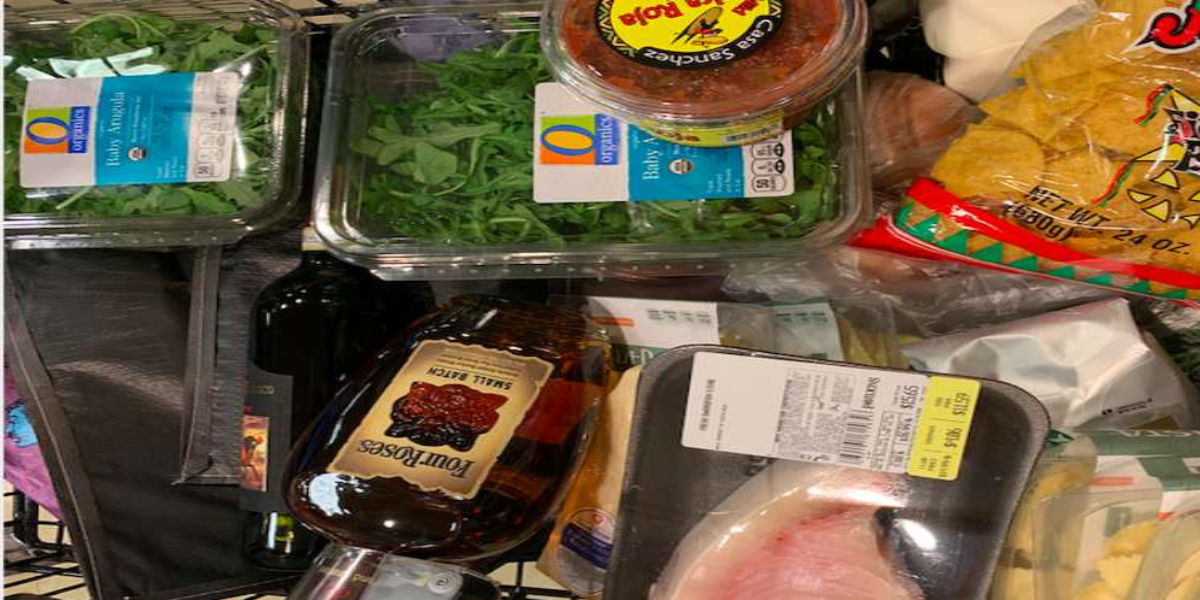
The New Rules of Grocery Shopping Under Quarantine
Covid-19 has drastically changed the way we shop for groceries, down to the way we put our food away when we get home. Here are some strategies for shopping in the age of coronavirus

Hugh Garvey
Working in a bio lab and writing for a health magazine for a decade taught me a few things about disease transmission and viral vectors—which might have something to do with why I’m a germaphobe. I’ve long avoided problematic surfaces from subway handles to hotel remote controls, thanks to dozens if not hundreds of doctors I’ve interviewed and studies I pored over. I even took a CDC-grade gunk detector to dozens of places in downtown New York, finding that the subways and the doorknobs were actually incredibly clean. The worst offenders? Citi Bike handlebars and seats and the Starbucks door pull.
Germaphobe or not, though, you shouldn’t be leaving the house if you can avoid it these days. The ease with which the coronavirus can be transmitted and its ability to linger on smooth surfaces both add several complicating factors to any excursion. The one “necessary” trip we all seem to be making now, however, is a run to the supermarket. We’ll discuss whether or not this is actually “essential” below, but my point is simply this: Most people are probably doing this the wrong way.
That’s why we’ve rounded up all relevant intel we’ve got on making your visit significantly less dangerous, to yourself and to others.
As always, stay up to date with CDC recommendations and information from the World Health Organization. And if you’re really serious about understanding how Covid-19 spreads, check out this video—the best visual explainer I’ve seen yet to why this pandemic has hit us so hard.
The New Shopping Rules
Don’t Go
Seriously. This is the most important rule you can heed. Do you really need baking powder for those biscuits? Consult our list of substitutions. (Spoiler: Baking soda and cream of tartar will work instead.) Ask yourself: Is this just a quick run for supplies? Or a mega-run to prevent you from having to go again for two weeks (or more)? There should be no more quick runs. Every time you come to a central gathering place you are at risk of contracting or spreading the virus, no matter how careful you might be.
Go When It’s Slow
Same rule for movie theaters and traffic applies here: The fewer people around you, the less risk of transmission. I’m not talking the early mornings, which have been reserved for seniors. I’m talking a half hour after the senior hour has closed and the second wave of early birds have cleared out; super late-night or a half hour before closing; weekdays other than Friday; and anytime other than peak “we need dinner” hours.
Go Where It’s Slow
If you can, within reason and recommendations, find a less busy store. Last week during peak panic shopping a Costco in South Torrance was virtually empty, compared with the lines out the door at a Trader Joe’s nearby. The more cramped the store, the less you should think about shopping there.
Plan Your Route
Write your shopping list by department: fresh vegetables, dairy, dry and canned goods, condiments. Check off each item in that category before moving on to the next department. Now is not the time to be doubling back and forth across the store. More time inside is more time exposed.
Buy in Bulk
Your area might not be hit hard yet—but according to health experts, it will be. You might not want to come back in a week for more rice, or butter, or milk.
Know What You Can Freeze
Milk and bread can be frozen, dumplings will last you months. Consult this handy guide for more info on what you can and can’t freeze.
Be Aisle Smart
If everyone’s crowding around the eggs, think about coming back that way after the swarm has dissipated.
Keep Your Guard Up
Don’t browse, linger, or relax. I’m trying not to be reactionary or hyperbolic here, but the number of people with surgical masks and gloves I’ve seen resting their elbows on counters of questionable hygiene and cleaning regimens is nil. This goes for your habits in the home, too. My mom worked as a nurse for decades and had a habit of turning on faucets with the backs of her hands or elbows; you’ll see surgeons doing this every day in Gray’s Anatomy, House, and any other medical drama (authentic!). To this day, I touch elevator buttons with the knob of my finger, instead of the tips—trying to avoid “piggyback” transmissions (more on that below).
Don’t Let It Piggyback
The virus can jump between “things,” not just hands. So if your credit card is swiped, or your bucket of lettuce touches the conveyor belt—consider it a “hot” item. If you just slipped that card back into your wallet, maybe the wallet or the adjacent cards need to be sanitized, too.
Know the Hot Zones
Know the kids’ game where you try not to touch the lava? Think of the lava as anything that exists outside your own personal bubble. The handles on grocery carts are a good example. If possible, avoid using a cart and bring your own bags.
Disinfect Early and Often
Make liberal use of disinfectant wipes being handed out at supermarkets.
Be Thankful
Be courteous, but cautious with grocery employees. They’re risking their lives just to help you eat. Acknowledge that. From a safe distance, obviously.
Make a DIY Airlock
Sanitize in your entryway. Executive editor Hugh Garvey has a checklist I’ve adopted, and my ever-vigilant dad sent me this guide to sanitizing groceries, which helps also. Think of your home as a spaceship, and set up an airlock so nothing unsanitary gets into the sterile part of your home.
Airlock Checklist
Park It
Designate a neutral spot in your kitchen. When you get home from the store, place all your bags in one spot (I place them on the floor midway between the sink and the counter; But, you ask, isn’t the floor dirty? Yes it is. And so are your bags!) This is your airlock. Nothing you bought at the store touches anything else or goes into the cupboard for fridge until it’s been cleaned. You’re already cleaning cabinet knobs along with every touch point in your house at least once a day already, right? Use Clorox wipes on all boxes, jars, and packages.
